Osteoarthrosis has been the subject of study at the OBL. Our researchers are developing new ideas about the effect of impact trauma on this disease and studying methods to prevent acute damage of cartilage that may cause OA. Below is a description of major projects underway in these areas.
The Mechanisms of Osteoarthrosis
A study to investigate the relationship between knee flexion and impact loads resulted in a paper published in the Journal of Orthopaedic Research, titled "Injuries Produced by Blunt Trauma to the Human Patellofemoral Joint Vary with Flexion Angle of the Knee" (Volume 19, pp. 827-833) (Abstract). The major finding of this research was that the response of the patellofemoral joint to blunt trauma varies with joint flexion angle. This data is important in the prediction of injury to automotive occupants of various stature.
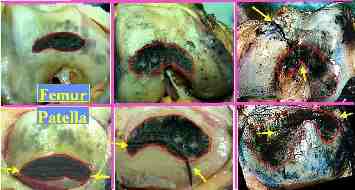
This figure shows how the joint contact area developed during impact loading of the patellofemoral joint changes with knee flexion angle.
Another recent research study involved the rate at which load is applied to articular cartilage. In a peer-reviewed Journal of Orthopaedic Research paper titled "The Extent of Matrix Damage and Chondrocyte Death in Mechanically Traumatized Articular Cartilage Explants Depends on the Rate of Loading" (Volume 19, pp. 779-784) (Abstract), our investigators found that high rate impacts generate more cartilage matrix damage than low rate impacts. In contrast, low rates of loading cause relatively more cellular death in the cartilage. This data helps us understand the correlation of impact trauma to the development of a chronic disease.
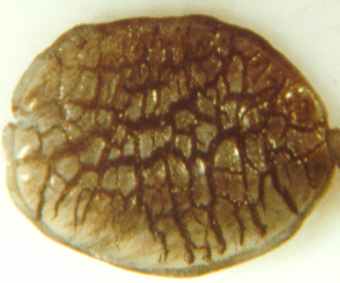 Comparison of High Rate Loading (left).
Comparison of High Rate Loading (left).

Low Rate Loading (right) on cartilage explants.

A recent study by OBL researchers, "Tolerance of the Isolated Human Knee to Blunt Force Trauma Significantly Decreases for Oblique Versus Direct Oriented Impacts on the Patella" in The Stapp Car Crash Journal (47: 1-19, 2003) (Abstract) involves the analysis of blunt impact on the human knee at different angles. Recent research has shown that people usually do not sit in a position that would cause the knee to experience a head-on impact. Therefore, studies have been developed to compare and contrast oblique versus central-oriented impact loads on the human knee. Results of this study may suggest that the human knee is more vulnerable to chronic degeneration following an oblique versus a central-oriented blunt impact.
Possible Interventions for Post-Traumatic Osteoarthrosis
The OBL has worked to develop methods of treating the damaged joint to delay or mitigate the onset of a chronic disease. A great deal of research focus has been on treating cells in cartilage explants with a compound called poloxamer 188. Cartilage which has undergone blunt trauma can be treated with poloxamer 188, which has been shown by other researchers to repair cell membranes damaged by shear stress. By comparing the cell viability between cartilage with poloxamer and cartilage without, we can determine the effects the poloxamer has on the explants, repairing damage caused by such impacts. This research spearheaded a presentation (Abstract) at the 49th Orthopaedic Research Society meeting.

Our researchers recently presented a paper at the 48th Orthopaedic Research Society meeting illustrating the effects of regular exercise on an injured joint. This presentation indicated that post-trauma exercise is a benefit to an injured, but stable, joint. The adjacent figure shows significant pathology in the rabbit's patello-femoral joint that were not exposed to a regular regimen of joint exercise post-trauma.
12 Months Exercise
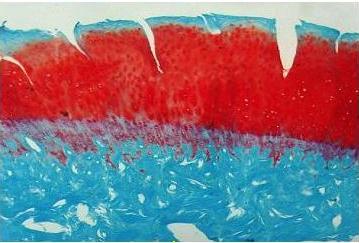
24 Months Exercise

24 Months Exercise
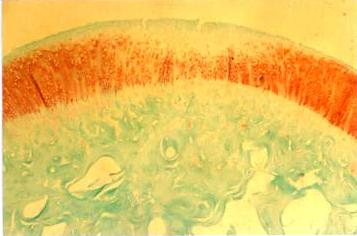
12 Months No Exercise
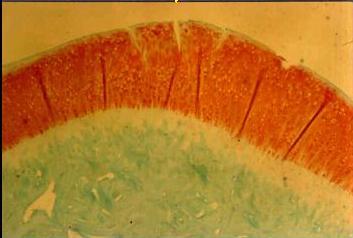
24 Months No Exercise
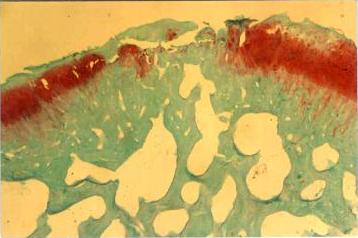
24 Months No Exercise
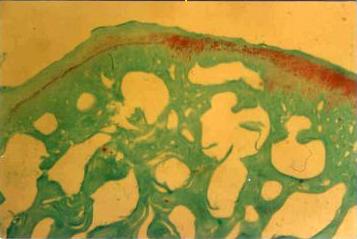
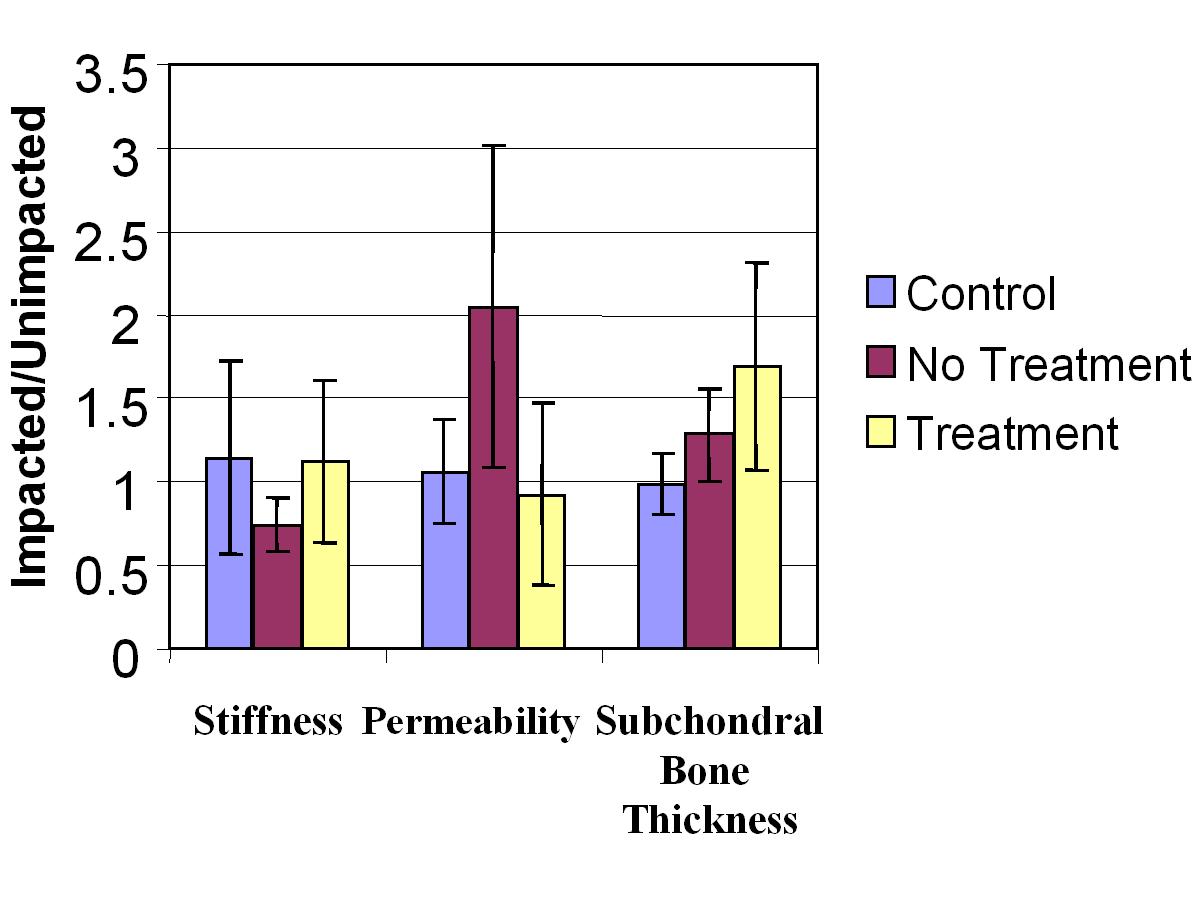
Histogram showing the functional properties of the retropatellar cartilage and the thickness of the underlying subchondral bone with and without PSGAG treatment post-trauma.
Furthermore, the OBL has investigated treatment of the damaged joint with polysulfated glycosaminoglycans (PSGAG). In vitro experiments have shown that PSGAG increases the synthesis of collagen and glycosaminoglycans in tissue explants. Therefore, it was hypothesized that PSGAG could mitigate the degradative effects of blunt trauma to a diarthrodial joint. Our research found that early administration of PSGAGs post-trauma had a positive effect on the mechanical integrity of retro-patellar articular cartilage. On the other hand, this intervention had no effect on remodeling of the underlying subchondral bone nor did it help repair surface lesions created by the blunt insult. This experiment was the foundation of a paper published in the Journal of Orthopaedic Research titled "Polysulphated Glycosaminoglycan Treatments can Affect Some Early Signs of Osteoarthrosis in a Traumatized Animal Joint" (18(5):756-761) (Abstract).
In another study, the effect of pretreating cartilage explants with glucosamine was investigated using different rates of impact loading. This study, "The Effect of Pretreatment with Glucosamine on Mechanically Traumatized Cartilage Explants," (Abstract) was presented at the 47th Meeting of the Orthopaedic Research Society. We found that glucosamine pretreatment can minimize the degree of cartilage matrix damage, but does not statistically affect the amount or distribution of cell death following a severe blunt impact. This data might suggest that this nutriceutical may provide some degree of protection to joint cartilage during vigorous athletic activity.

Change in water content (and thus, matrix damage) after one day post-impact with and without GS.